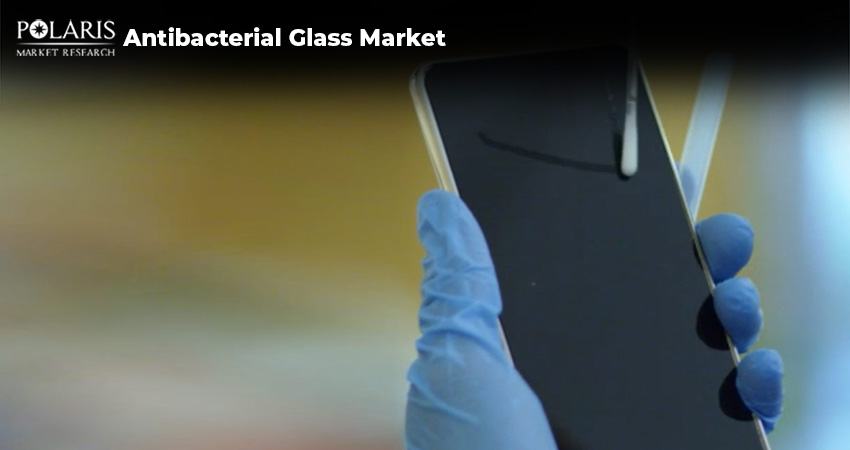How Antibacterial Glass Helps Prevent Microbial Growth?

Imagine a world where the surfaces you touch every day actively fight off harmful bacteria. This isn't science fiction; it's the reality of antibacterial glass. This innovative material, infused with antimicrobial agents, offers a powerful and continuous defense against the spread of germs in homes, hospitals, and beyond. From touchscreens to countertops, antibacterial glass is poised to revolutionize hygiene, offering a sleek and effective solution to keep our environments cleaner and healthier.
Several companies are investing in advanced antimicrobial technologies to develop high-performance antibacterial glass. This blog takes a good look at the technology behind antibacterial glass and its applications. Also, it sheds light on the latest developments in the realm of antibacterial glass. Read on!
What Is Antibacterial Glass?
Antibacterial glass is a type of glass that incorporates antimicrobial agents into its composition and prevents the growth of bacteria and various other microbes. It is commonly manufactured using silver ions, copper, or other antimicrobial coatings that inhibit bacterial activity and maintain the hygiene of services.
The antibacterial properties of the glass are either embedded into the glass structure during production or applied as a coating on the surface. Some of the most commonly used antimicrobial agents include:
- Silver Ions (Ag+): Silver is widely known for its antimicrobial properties. It disrupts bacterial cell membranes, inhibiting their growth and reproduction.
- Copper Ions (Cu+): Copper possesses natural antimicrobial properties and has been used in healthcare settings to reduce microbial contamination.
- Titanium Dioxide (TiO2): This photocatalytic compound, when activated by UV light, generates reactive oxygen species that eliminate bacteria and viruses.
How Does Antibacterial Glass Work?
Antibacterial glass works by leveraging the antimicrobial properties of incorporated elements such as silver or copper ions. When bacteria come into contact with the surface, these ions interfere with their cellular functions, preventing replication and ultimately killing the microorganisms.
The antibacterial effect is long-lasting and remains active throughout the lifespan of glass, making it a highly effective solution for reducing microbial contamination in high-touch environments.
Major Antibacterial Glass Applications
Antibacterial glass is being integrated into various industries due to its ability to enhance hygiene and safety. Some key applications are discussed below.
-
Healthcare and Hospitals: Hospitals and medical facilities are hotspots for bacterial contamination. Antibacterial glass for healthcare settings, including hospitals and clinics, to reduce the spread of bacteria and infections. It's particularly effective in high-touch areas such as windows, hospital beds, door handles, and medical device screens, offering long-lasting protection without needing frequent reapplication
-
Food & Beverage Industry: In the food & beverage industry, these glasses can be used in food preparation and packaging. They help maintain a sterile environment that is a crucial part of organic food & beverages. Apart from this, they are also used in the prevention of bacterial growth in food storage areas and to ensure contamination-free storage and transport of food items.
-
Consumer Electronics: Antibacterial glass for electronics is gaining traction in consumer electronics, particularly for touchscreen hygiene, to reduce bacterial growth and enhance hygiene. The technology works by incorporating antibacterial agents, like silver ions, into the glass surface, providing a sustained antimicrobial effect. This helps prevent the spread of germs and keeps touch surfaces cleaner.
-
Other Applications: Antibacterial glass, which incorporates antimicrobial coatings and has the ability to inhibit bacterial growth and reduce contamination, is valuable in various settings where hygiene is crucial. The application extends to areas like military equipment and even household items, where antibacterial surfaces can help prevent the spread of germs.
Emerging Trends Transforming Antibacterial Glass Landscape
The global antibacterial glass market is experiencing rapid growth, driven by increasing concerns about hygiene and infection control. Some of the emerging trends include:
Advancements in Nanotechnology
Research in nanomaterials is leading to more efficient and long-lasting antibacterial coatings. It offers significant advancements in antibacterial glass by enabling the creation of surfaces that inhibit bacterial growth and adhesion. This is achieved through various techniques, including incorporating nanocoating (like copper or silver) with inherent antimicrobial properties into the glass structure or creating nanoscale patterns on the surface to disrupt bacterial adhesion. These advancements lead to more effective and durable antibacterial surfaces with broader applications. Combining different types of nanoparticles or using them in conjunction with other materials can enhance the antibacterial properties of the glass.
Rising Demand in Hospitals
This growth in hospitals and medical facilities is primarily driven by the need to combat hospital-acquired infections. The demand for antibacterial glass in hospitals is rising due to increased concerns about hygiene and the prevention of healthcare-associated infections (HAIs. Innovations in antibacterial glass technology, such as silver-based coatings, have enhanced its effectiveness and appeal to the healthcare sector. As concerns about the effectiveness and safety of organic biocides have grown, there's a move towards antimicrobial solutions like antibacterial glass.
Sustainability Focus
The sustainability focus in antibacterial glass involves developing environmentally friendly manufacturing processes and coatings, using recycled materials, and ensuring end-of-life recyclability. This trend is driven by increasing emphasis on sustainable building practices and green construction, making antibacterial glass a popular choice for its hygiene and energy efficiency. Using recycled glass in the manufacturing process is a key aspect of sustainability, waste management, and resource consumption. Ensuring that antibacterial glass can be recycled at the end of its life cycle is crucial for minimizing its environmental impact.
To Sum It Up
Antibacterial glass is a real-world game-changer for hygiene, design, and sustainability. As technology advances, the integration of antimicrobial coatings and nanomaterials is expected to enhance the effectiveness and durability of antibacterial glass. From hospitals to homes, this innovation cuts germs, reduces cleaning, and redefines how we interact with everyday surfaces.

